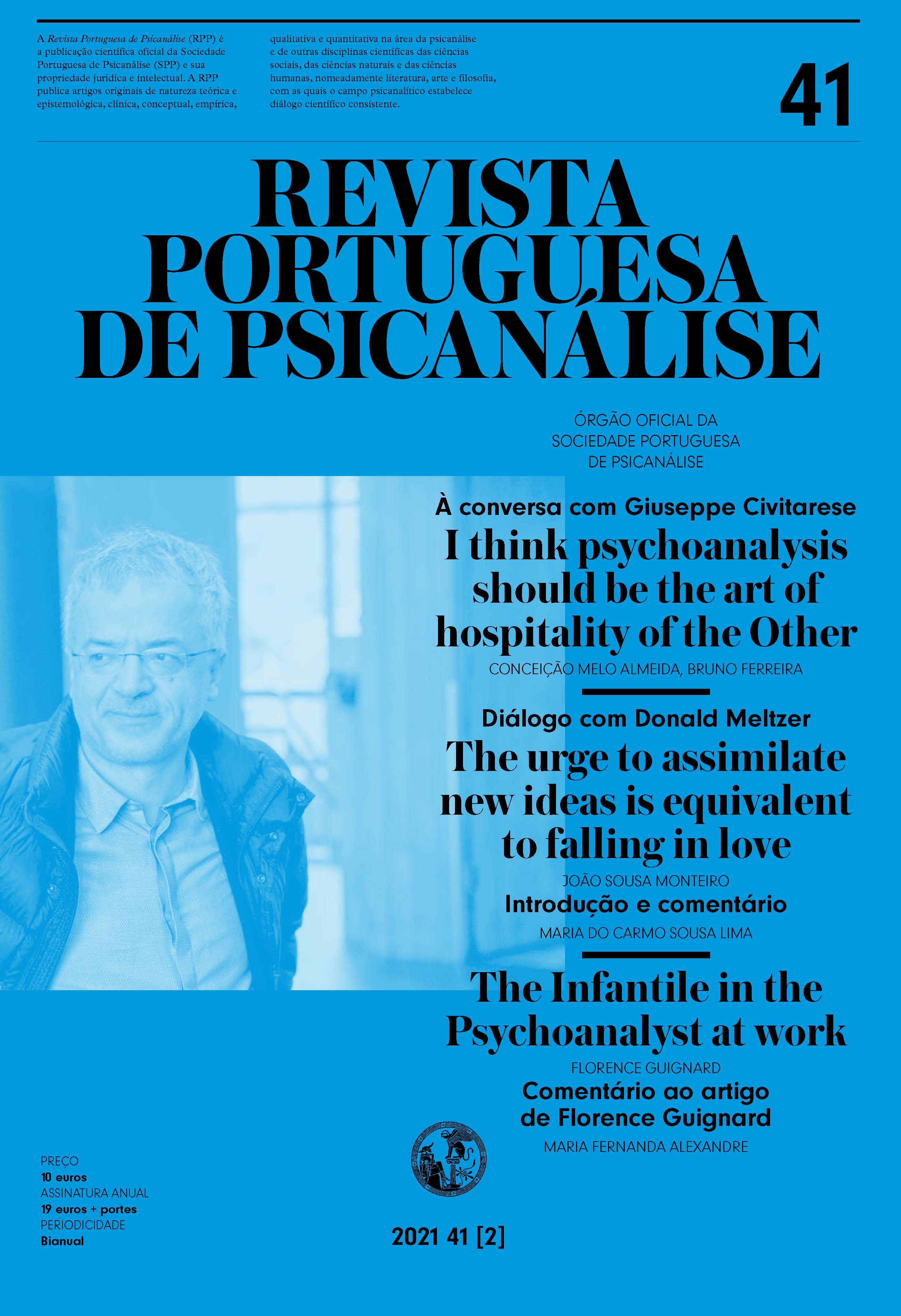"Lo que no queremos escuchar": Ambivalencias y malentendidos en el psicoanálisis con niños

Abstract
“What we do not want to listen to”: Ambivalences and misunderstandings in child psychoanalysis
In the psychoanalytical field, we realize that despite the centrality awarded to childhood, only a small minority of psychoanalysts seek child psychoanalytic training or analyze children on a regular basis. This paper reflects on some of the difficulties and ambivalences that impair the analyst's analytic attitude and disposition to relate to children as suitable subjects for psychoanalysis and examine some conceptual misunderstandings about childhood related to these ambivalences. The author examines three challenges, particularly significant in the analyst's ambivalence: 1.the wish to cure the child, 2.the turbulent to-and-fro identification movements that characterize the analytical process and 3.the deep involvement of the analyst's psyche and the contratransferencial anxieties he is exposed to Finally, the author identifies some misunderstandings and confusions in what regards the concepts of childhood, infantile, infantile neurosis and in relation to the way children communicate with the analyst.
Keywords
Childhood, Infantile, Ambivalence, Psychoanalytic identity, Infantile neurosis
References
- Bion, W. R. (1963). Elements of psycho-analysis. William Heinemann.
- Bion, W. R. (1970). Atención e Interpretación. Paidos.
- Bion, W. R. (1992). Cogitations. Karnac Books.
- Borges, J. L. (1997). El Aleph. Alianza Editorial.
- Britton, R. (1989). The Missing Link: Parental Sexuality in the Oedipus Complex. En R. Britton,
- Bronstein, C. (2019). A flor de piel. En temasdepsicoanálisis.org,17.
- Freud, S. (1909a). Análisis de la fobia de un niño de cinco años. En Obras Completas (vol. X, pp.). Amorrortu.
- Freud, S. (1909b). A propósito de un caso de neurosis obsesiva. En Obras completas (vol. X, pp.). Amorrortu.
- Freud, S. (1914). Introducción del narcisismo. En Obras Completas (vol. XIV, pp.). Amorrortu.
- Freud, S. (1918). De la historia de una neurosis infantil. En Obras Completas (vol. XVII, pp.) Amorrortu.
- Freud, S. (1919). Lo ominoso. En Obras Completas (vol. XVII, pp.). Amorrortu.
- Freud, S. (1919). Nuevos caminos de la terapia psicoanalítica. En Obras Completas (vol. XVII, pp.). Amorrortu.
- Freud, S. (1926). Inhibición, síntoma y angustia. En Obras Completas (vol. XX, pp.). Amorrortu.
- Freud, S. (1933). Nuevas conferencias de introducción al psicoanálisis. En Obras Completas (vol. XXIII, pp.). Amorrortu.
- Goldiuk, H. (2018). Intimidad y la capacidad de "sufrir" la soledad. En temasdepsicoanálisis.org, 15.
- Klein, M. (1937). Amor, culpa y reparación. En Obras Completas (Tomo I, pp.). Paidos-Horme.
- Petot, J. (1993). Melanie Klein, Vol. 2: The Ego and the Good Object. International Universities Press.
- Segal, H. (1977). Countertransference. International Journal of Psychoanalytic Psychotherapy, 6, 31–37.
- Steiner, J. (1997). Refugios psíquicos. Biblioteca Nueva.
- Wille, R. S. (2008). Psychoanalytic Identity: Psychoanalysis as an Internal Object. The Psychoanalytic Quarterly, 77(4), 1193–1229.